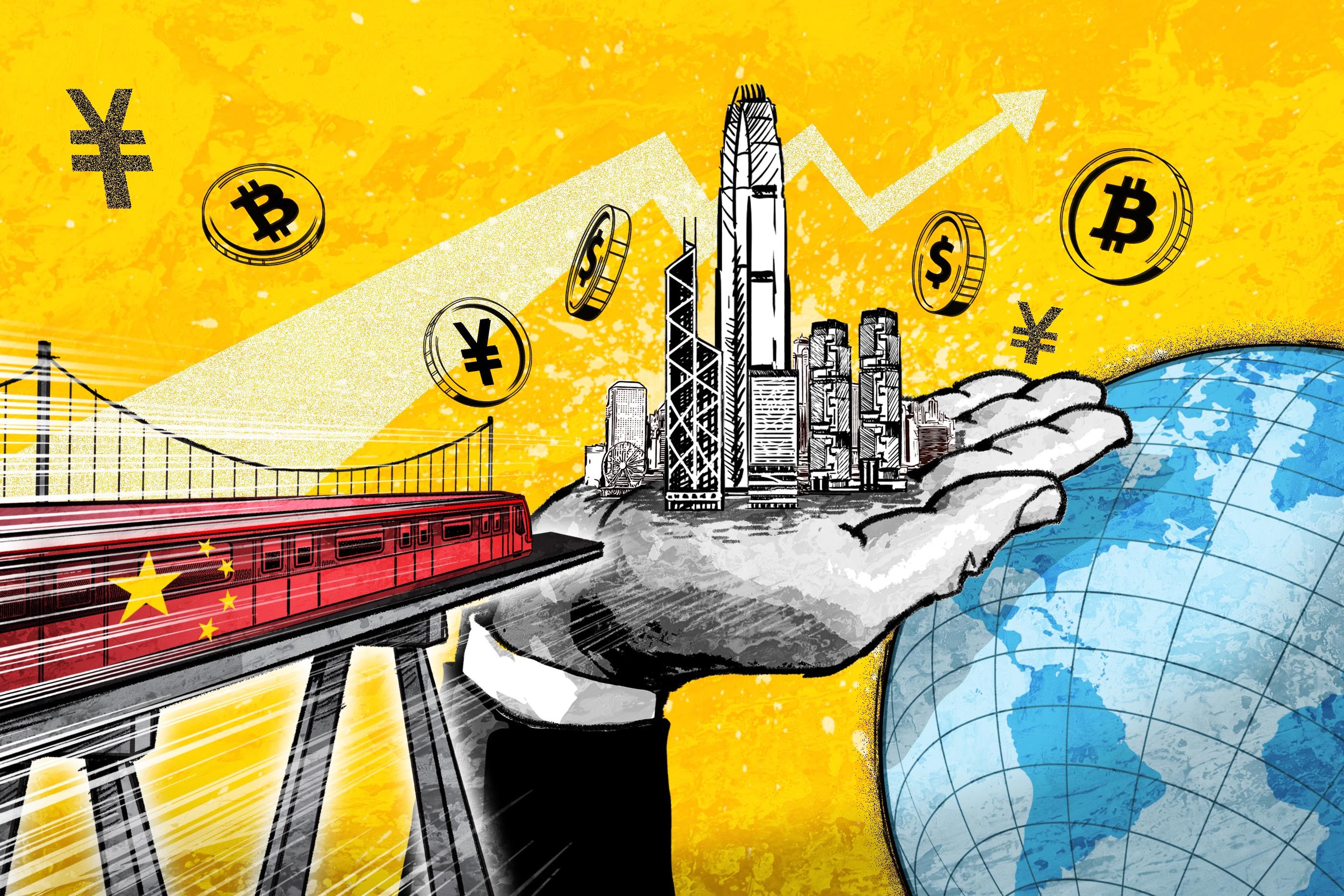By Sylvia Ma
Copyright scmp

As China drafts its 15th five-year plan – the next entry in a line of expansive blueprints that have set the tone for the country’s development over more than seven decades – we examine how these documents inform and reflect high-level policy priorities, what to expect in the coming iteration and how Hong Kong could strengthen its position as a “superconnector” linking the mainland with global markets.
For more stories in this ongoing series, click here.
In a LinkedIn post earlier this month, Phil McManus, innovation and technology chair at the British Chamber of Commerce in Hong Kong, declared: “Hong Kong bounced back. It always has. It always will.”
Not long ago, the script was the opposite. Many wondered if the city had lost its allure as an international financial centre, its halo dimmed by intensifying US-China tensions, a prolonged economic slowdown and the influence of regional rivals like Singapore.
But these doubts have eased in the wake of a rising stock index, a surge in fundraising and the city’s growing appeal to global businesses and talent. As Beijing drafts its 15th five-year plan, the country’s main socio-economic development blueprint, analysts said the special administrative region could play a unique role in China’s evolving economic strategy.
“Put simply, Hong Kong’s position in China’s next five-year plan will determine the policies and resources Beijing directs its way,” said Raymond Yeung, chief economist for Greater China at ANZ.
Like other regions in China, Hong Kong, along with Macau and Taiwan, has seen its economic trajectory shaped in large part by Beijing’s policy decisions.
Since the 1997 handover, the former British colony has become more deeply integrated with mainland China. Beijing’s Greater Bay Area strategy, which integrates Hong Kong, Macau and Guangdong province into an economic cluster, complements a range of initiatives that reinforce Hong Kong’s “superconnector” role in global financial markets.
The 15th five-year plan might also prove vital for Taiwan, whose semiconductor-led economy has been highly exposed to recent US tariffs and cross-strait tensions. The evolving policy stance of Beijing as it relates to the island will decide the future of cross-strait tourism and trade, as well as the fate of concessions under the Economic Cooperation Framework Agreement.
“Over the next five years, China’s economy will undergo a structural transformation and will need to break deflation and rebuild wealth effects – this is where Hong Kong’s capital markets can play a role,” said Xiao Geng, professor and associate dean of the School of Public Policy at the Chinese University of Hong Kong’s Shenzhen campus (CUHK-Shenzhen).
“It should also serve as an important platform that deepens China’s integration with the global economy.”
Hong Kong has long secured its status as a global financial centre, capitalising on its geographic location, common law system and open markets, with financial services directly contributing about a quarter of gross domestic product and 7.3 per cent of employment in 2023.
Over the past five years, however, the city has experienced ups and downs. Its initial public offerings (IPO) market slumped from 2021 to 2023, and the benchmark Hang Seng Index (HSI) fell for three consecutive years from 2021 through 2023. That stands in sharp contrast to the more than 20 per cent annual gain in the US S&P 500 in three of the past four years, excluding 2022.
But investor confidence has been reinvigorated this year by a revival in IPOs – including mega listings by Chinese companies, such as battery maker Contemporary Amperex Technology – along with a roughly 30 per cent gain in the HSI. Fundraising hit HK$134.5 billion (US$17.3 billion) in the first eight months of 2025, up 579 per cent year on year, according to Hong Kong Exchanges and Clearing.
Rui Meng, a finance professor at the China Europe International Business School in Shanghai, predicted that future listings by major Chinese companies would likely adopt an “A+H” structure, with A-shares on the mainland and H-shares in Hong Kong.
“This approach can attract both domestic and overseas investors, while also leveraging the strengths of the two markets in areas such as corporate governance and shareholding structure,” he said.
A total of 161 companies are listed in both mainland China and Hong Kong, including 11 added this year, according to Wind, a Shanghai-based financial data provider.
Analysts said that over the next five years, Hong Kong has the potential to advance Beijing’s development priorities by serving at the forefront of yuan internationalisation, as a testing ground for new asset classes and as a “safe haven” for global capital amid rising geopolitical tensions.
According to Xiao of CUHK-Shenzhen, Beijing’s policy priorities include developing “new productive forces” and driving breakthroughs in critical technologies. This will create opportunities for Hong Kong’s capital market to share in both the risks and rewards of innovation, he said.
“Just as deep US capital markets absorb innovation risks across investors and empower its technology sector, Hong Kong could play a similar role by attracting global capital and developing an IPO and venture capital ecosystem,” added Xiao, who is also a member of the expert group at the Hong Kong Chief Executive’s Policy Unit.
Zheng Yongnian, a political economist also with CUHK-Shenzhen, said Hong Kong has the potential to become the “first stop” for Chinese companies going abroad. “We’ve often said that if firms don’t go global, they will be forced out. But for many smaller companies, a lack of geopolitical awareness means they risk being pushed out as soon as they step overseas.”
“If Hong Kong serves as the first stop, its more mature service system can help.”
Beyond linking China with the rest of the world, Hong Kong is well-positioned to become a “safe harbour” for global capital, serving roles in wealth management, reserves and financial security, said Yeung from ANZ.
This will be critical, he added, as global investors are increasingly concerned about US dollar assets in light of US President Donald Trump’s efforts to undermine the Federal Reserve’s independence and America’s skyrocketing debt.
“We could even imagine Hong Kong becoming like Basel, hosting more headquarters of international financial institutions, with the Hong Kong dollar potentially serving as an alternative to the US dollar,” Yeung said.
In addition to its role as an international financial hub, analysts said Hong Kong will have opportunities to align more closely with other national priorities over the next five years.
According to Mao Zhenhua, an economics professor with the University of Hong Kong and co-director of Renmin University’s Institute of Economic Research, the city could coordinate with the central government to boost domestic demand by easing travel permit rules for mainland residents. It might also pursue breakthroughs in critical technologies and pool research resources with Shenzhen, he added.
Zheng of CUHK-Shenzhen said China should step up efforts to attract overseas talent and position Hong Kong as an “international talent hub”, especially as the Trump administration cuts funding for scientific research.
With the city’s first stablecoin ordinance taking effect on August 1, analysts said Hong Kong’s development of such cryptocurrencies – pegged to fiat currencies like the US dollar or Hong Kong dollar, or to other reserve assets – could bolster efforts to internationalise the yuan.
Hong Kong manages about 80 per cent of global offshore yuan payments and hosts the largest offshore yuan liquidity pool, with deposits reaching 938.2 billion yuan (US$120.7 billion) as of July – underscoring its role as a critical platform for the currency’s internationalisation.
The yuan’s share in global payments has edged up over the past five years, climbing from 1.88 per cent at the end of 2020 to a peak of 4.74 per cent in July 2024 before retreating to 2.93 per cent this August, according to the Society for Worldwide Interbank Financial Telecommunication – though its progress as a reserve currency has been much slower.
Xiao, who also serves on the expert group for the Hong Kong Chief Executive’s Policy Unit, urged regulators to consider issuing yuan-backed stablecoins in the city as soon as the framework matures. He added this could “significantly contribute to the yuan’s internationalisation” at a time when US dollar-backed stablecoins risked entrenching “dollarisation” in the international monetary system.
Hong Kong must face a harsh reality: in today’s stablecoin world, playing the ‘good child’ is doomed to fail
Wang Yang, University of Hong Kong, and Bai Liang, Zero One Think Tank
But Beijing faces a dilemma: while it wants to internationalise the yuan, it remains wary of the risks associated with crypto assets – a gap that analysts said Hong Kong could fill.
Xiao proposed a dual-track approach for the city: keeping existing assets denominated in Hong Kong or US dollars, while channelling future flows through an offshore yuan-pegged stablecoin system. This could support payments and financing for Belt and Road Initiative projects and offshore bond issuance by mainland institutions.
“It won’t touch domestic monetary policy, but it could give the yuan’s international push a real boost,” he added.
Yeung from ANZ said Hong Kong’s progress on stablecoins signals the city will be allowed to take bolder steps on digital assets compared to the mainland, where tighter regulations and concerns over financial stability have slowed such moves.
But in an August interview with the Post, Zhao Changpeng, the founder and largest shareholder of cryptocurrency exchange Binance, urged regulators to act quickly to ensure the city reaches its potential. Hong Kong has the attributes to become a major hub for virtual assets, rivalling markets like the US and the United Arab Emirates, he added.
Meanwhile, other analysts warned that Hong Kong risked missing a crucial window in the global stablecoin race if it prioritises crafting a “perfect regulatory framework” over vibrant market growth.
“Hong Kong must face a harsh reality: in today’s stablecoin world, playing the ‘good child’ is doomed to fail,” wrote Wang Yang, vice-president of the University of Hong Kong, and Bai Liang, CEO of Zero One Think Tank, in a Financial Times column earlier this month.
Hong Kong’s unique edge lies in linking China’s vast real economy with global capital markets, making “real-world assets the absolute core of its stablecoin strategy”, they added.
This gives the city a clear advantage over Shanghai, and one of Beijing’s priorities over the next five years will be to better coordinate the two financial centres – Shanghai onshore, Hong Kong offshore – to hedge against the risk of financial decoupling from the US.
Some progress has already been made. In June, the two cities signed an action plan to deepen market linkages in areas such as cross-border settlement, connectivity in gold products, cross-border digital yuan applications and the expansion of reinsurance businesses by Shanghai-based financial institutions through Hong Kong.
In an article published in June, Sheng Songcheng, the former head of the central bank’s statistics department, compared the relationship between Hong Kong and Shanghai to that of London and New York, which serve as offshore and onshore hubs for the US dollar.
He said the two Chinese cities could draw lessons from their Western counterparts, whose distinct roles – London specialising in offshore dollar liquidity, New York in asset pricing – benefit from close regulatory cooperation.
But for now, trading Chinese stocks remains difficult for foreign investors, except for those in Hong Kong, said Ian Goldin, a professor of globalisation and development at the University of Oxford, in an earlier interview with the Post.
“Trading shares in Chinese stocks is still very difficult, though you can do it through Hong Kong,” he said. “Everyone, including me, wants to invest in China, but we can’t do it very easily.”
Additional reporting by He Huifeng



